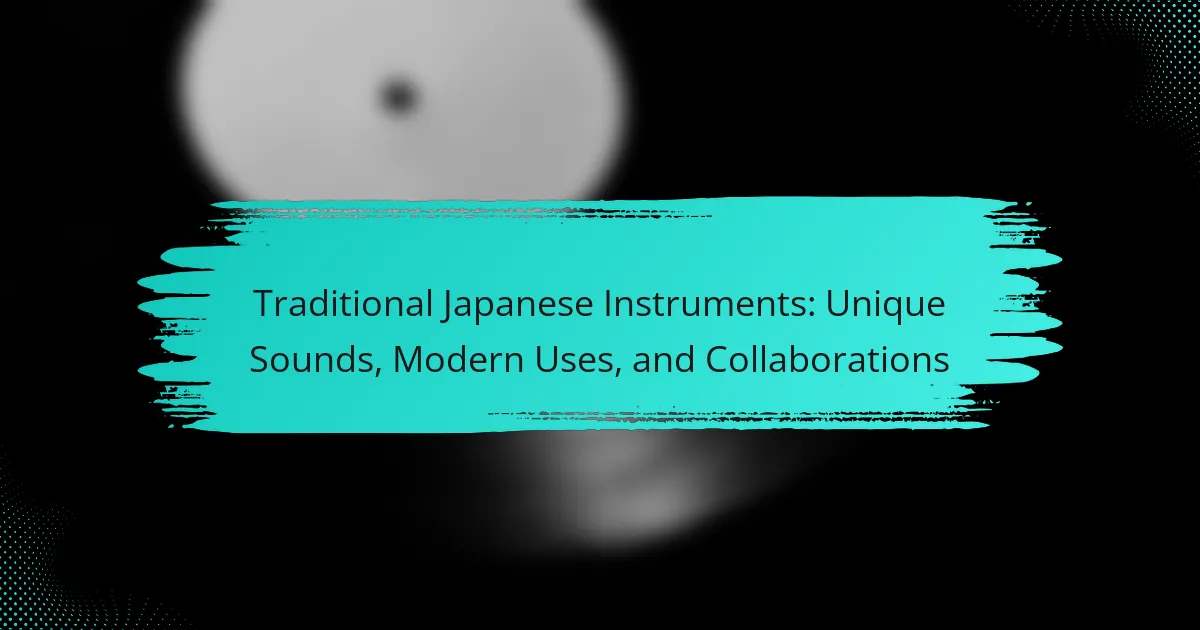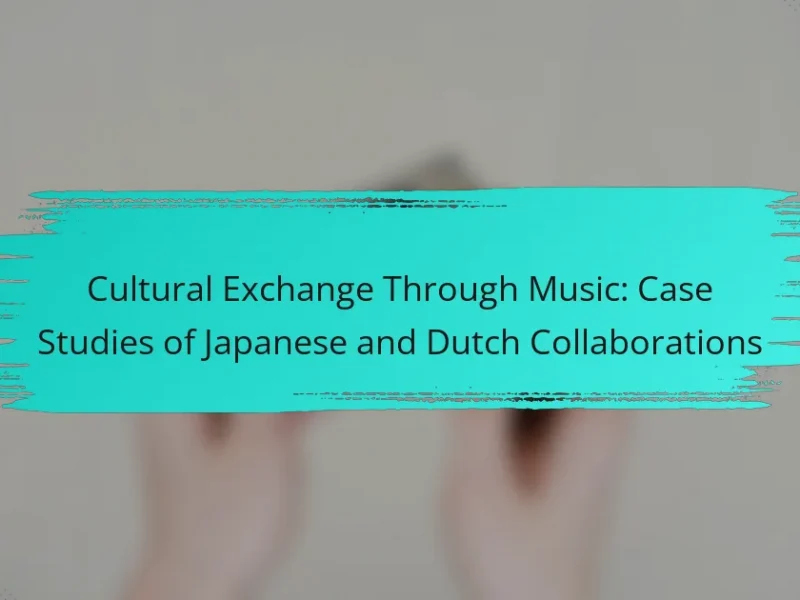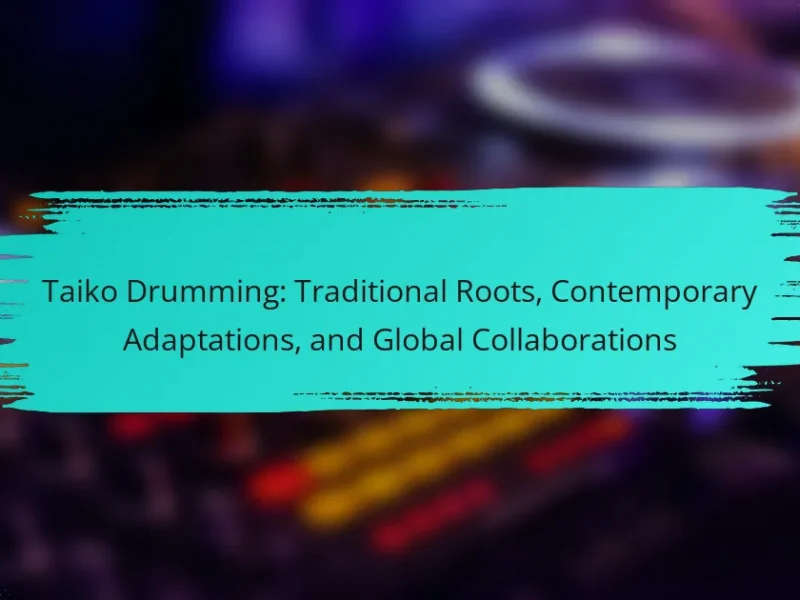Traditional Japanese instruments like the shamisen, koto, and shakuhachi offer unique sounds that enrich modern music. These instruments showcase traditional craftsmanship while adapting to contemporary genres. Collaborations with modern artists highlight their versatility and cultural significance. However, challenges such as declining traditional practices and competition from popular music threaten their preservation.
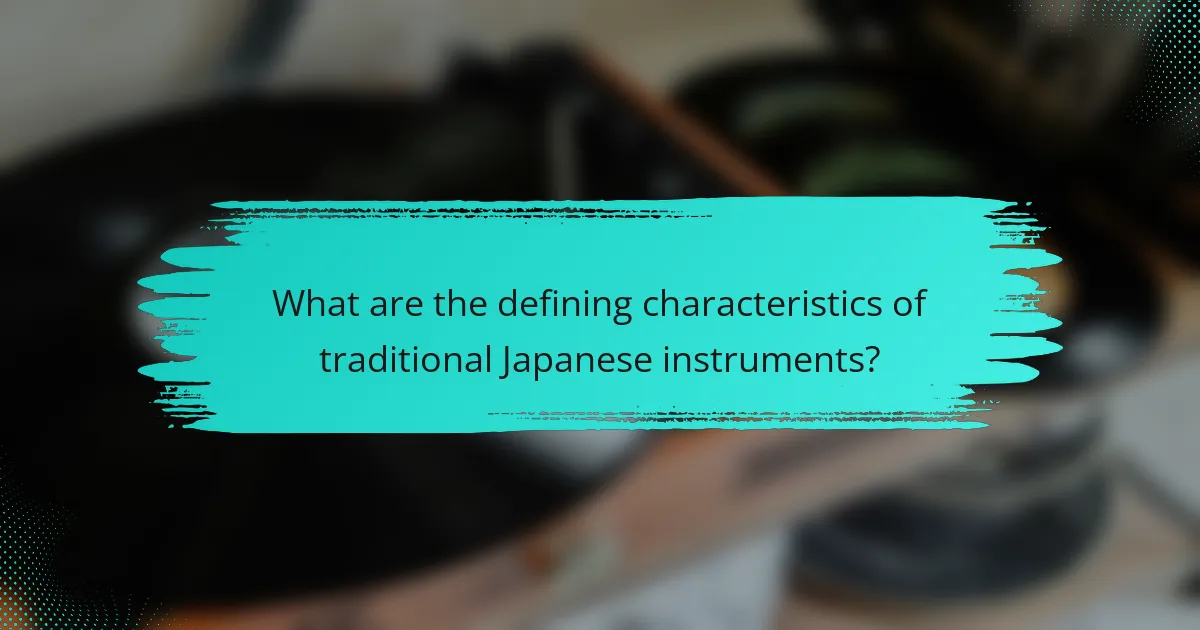
What are the defining characteristics of traditional Japanese instruments?
Traditional Japanese instruments are characterized by unique sounds, craftsmanship, and cultural significance. Instruments like the shamisen, koto, and shakuhachi showcase distinct tonal qualities shaped by traditional construction methods. The shamisen, a three-stringed instrument, produces a sharp, percussive sound, while the koto, a 13-string zither, offers a rich, resonant tone. The shakuhachi, a bamboo flute, is known for its breathy, meditative sound. These instruments are not only integral to traditional music but have also found modern applications in various genres, illustrating their adaptability and enduring appeal. Collaborations with contemporary artists further highlight their versatility, bridging cultural gaps and enriching musical landscapes.
How do traditional Japanese instruments differ from Western instruments?
Traditional Japanese instruments often emphasize subtlety and expressiveness, differing significantly from Western instruments. Japanese instruments like the shamisen and koto produce unique sounds that reflect cultural aesthetics, while Western instruments focus on volume and range. Traditional Japanese music frequently employs microtones, which are rare in Western music, creating distinct auditory experiences. Additionally, modern collaborations showcase the versatility of these instruments, blending traditional styles with contemporary genres.
What cultural significance do these instruments hold in Japan?
Traditional Japanese instruments hold deep cultural significance, symbolizing Japan’s heritage and artistic expression. Instruments like the shamisen and koto are integral to traditional music, reflecting historical narratives and regional diversity. These instruments are often featured in festivals and ceremonies, reinforcing community bonds. Collaborations with contemporary artists showcase their adaptability, bridging the past and present while preserving unique sounds.
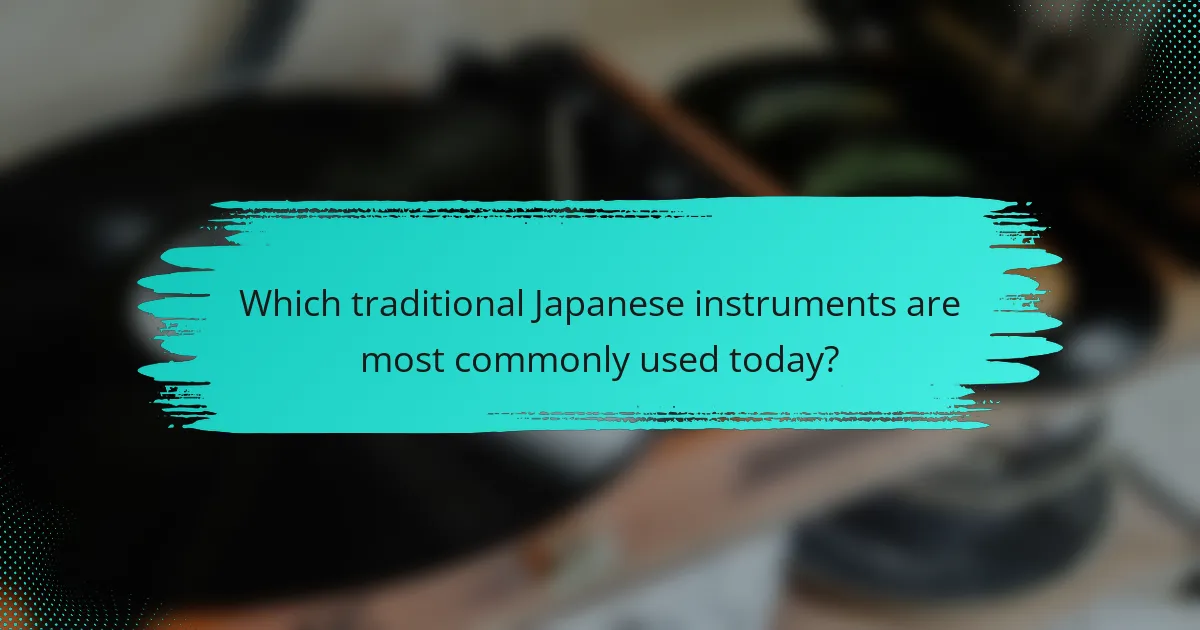
Which traditional Japanese instruments are most commonly used today?
Traditional Japanese instruments commonly used today include the shamisen, koto, and shakuhachi. These instruments blend traditional sounds with modern genres, enhancing cultural performances and collaborations.
The shamisen, a three-stringed instrument, is often featured in folk music and theater. The koto, a long zither, is used in both classical music and contemporary compositions. The shakuhachi, a bamboo flute, finds its place in meditation and modern fusion music, showcasing its versatility.
These instruments not only preserve cultural heritage but also adapt to modern musical landscapes, fostering collaborations across genres.
What are the unique sounds produced by instruments like the shamisen?
The shamisen produces unique sounds characterized by its distinct three-string structure and the use of a plectrum called a bachi. This instrument creates a range of tones from sharp and percussive to soft and melodic, depending on playing techniques. The unique attribute of the shamisen lies in its ability to convey deep emotional expressions, making it integral to traditional Japanese storytelling and performance. Its modern uses include collaborations with various music genres, showcasing its versatility and continued relevance in contemporary music.
How does the koto’s playing technique influence its sound?
The koto’s playing technique significantly influences its sound through finger positioning, plucking methods, and use of vibrato. Players can create a wide range of tones by varying the pressure and speed of their finger movements. For example, using a plectrum allows for sharper, more defined notes, while fingerstyle techniques produce softer, more nuanced sounds. The unique attribute of the koto is its ability to produce both melodic and percussive effects, enhancing its versatility in modern music collaborations. Additionally, the tuning of the strings can also alter the overall sound, allowing for diverse musical expressions.
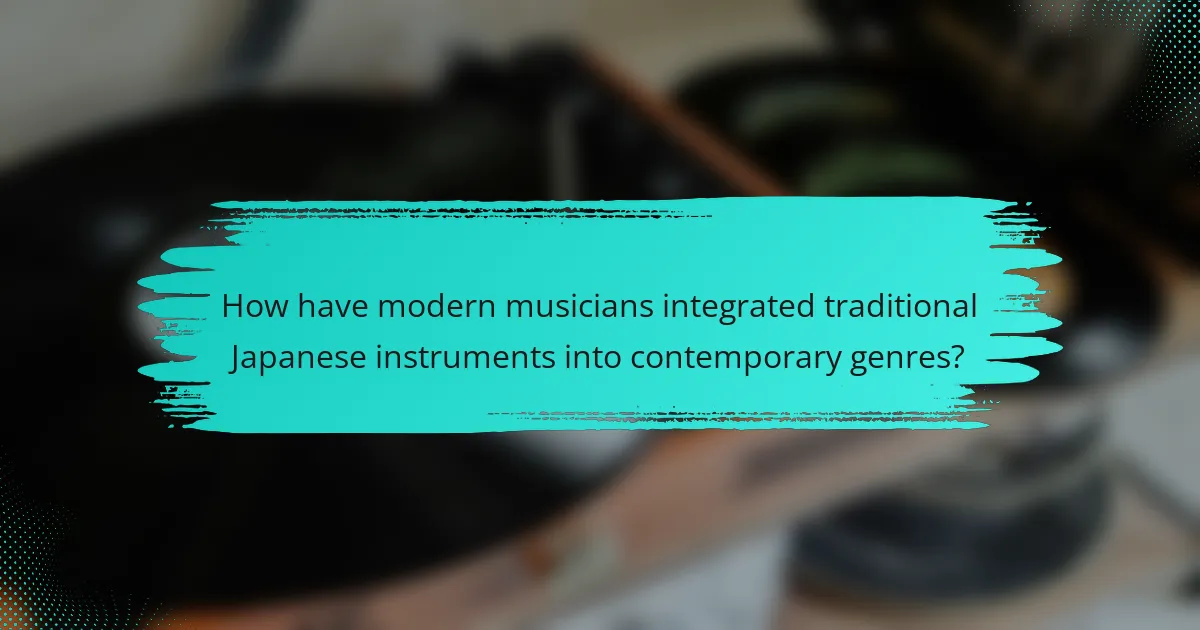
How have modern musicians integrated traditional Japanese instruments into contemporary genres?
Modern musicians have seamlessly integrated traditional Japanese instruments into contemporary genres, enriching soundscapes and fostering cultural exchange. Artists like Yo-Yo Ma and Kodo have collaborated with modern genres, blending the koto and shamisen with jazz and pop. This fusion creates unique auditory experiences that resonate with diverse audiences. The use of these instruments enhances emotional depth, showcasing their versatility beyond traditional settings.
What are some notable collaborations between traditional and modern artists?
Notable collaborations between traditional Japanese instruments and modern artists include projects that blend ancient sounds with contemporary genres. Artists like Ryuichi Sakamoto and Kodo have fused taiko drumming with electronic music, creating unique auditory experiences. Additionally, the collaboration between traditional shamisen players and modern rock bands has introduced new audiences to these instruments. These partnerships highlight the versatility of traditional sounds, showcasing their relevance in today’s music scene.
How do these collaborations influence the perception of traditional music?
Collaborations significantly enhance the perception of traditional Japanese instruments by blending unique sounds with modern genres. They create innovative music that attracts diverse audiences. For instance, traditional instruments like the shamisen and koto are often featured in contemporary pop and electronic music, showcasing their versatility. This fusion not only preserves the cultural heritage but also revitalizes interest among younger generations, fostering a dynamic appreciation of traditional music. As a result, collaborations serve as a bridge between the past and present, enriching the musical landscape.
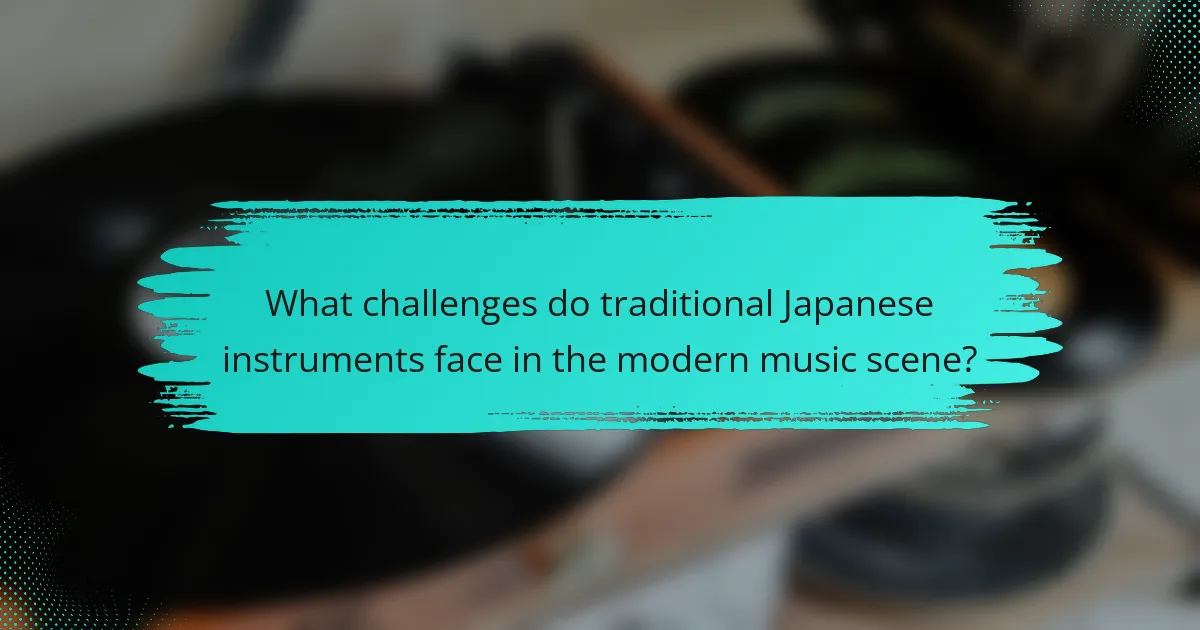
What challenges do traditional Japanese instruments face in the modern music scene?
Traditional Japanese instruments face challenges in modern music due to declining traditional practices and competition from contemporary genres. The loss of skilled artisans affects instrument quality and availability. Additionally, younger audiences often prefer popular music styles, leading to decreased interest in traditional forms. Collaborations with modern artists can help bridge this gap, but preserving authenticity remains a concern.
How is the preservation of traditional techniques being addressed?
The preservation of traditional techniques is being actively addressed through education, community engagement, and modern collaborations. Educational programs are teaching younger generations about traditional Japanese instruments, ensuring skills are passed down. Community events and workshops foster appreciation and participation, creating a vibrant culture around these instruments. Collaborations with contemporary musicians introduce innovative uses, blending traditional sounds with modern genres, thus expanding their relevance and appeal. This approach not only safeguards the techniques but also revitalizes interest in traditional music forms.
What role do educational institutions play in promoting traditional music?
Educational institutions play a crucial role in promoting traditional music by integrating it into curricula and fostering collaborations. They provide students with opportunities to learn about traditional Japanese instruments, such as the shamisen and koto, enhancing cultural appreciation. Programs often feature workshops and performances, enabling students to experience unique sounds firsthand. By partnering with local artists, schools create a vibrant community around traditional music, ensuring its relevance in modern contexts. These initiatives help preserve cultural heritage while encouraging innovation in musical expression.
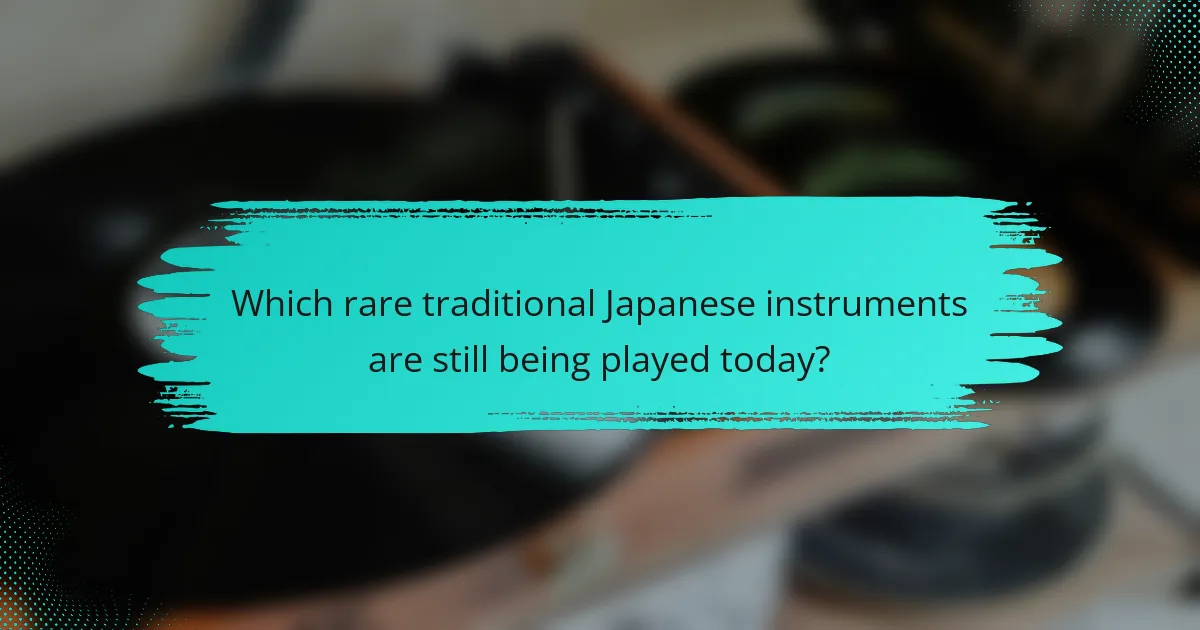
Which rare traditional Japanese instruments are still being played today?
Traditional Japanese instruments still being played today include the shamisen, koto, and shakuhachi. These instruments have unique sounds and are often used in modern performances and collaborations.
The shamisen, a three-stringed instrument, produces a distinct, sharp tone. It is frequently featured in traditional theater and contemporary music. The koto, a long zither with thirteen strings, offers a serene sound and is played in both solo and ensemble settings. The shakuhachi, a bamboo flute, is known for its expressive, breathy quality and is used in various musical genres.
These instruments not only preserve cultural heritage but also adapt to modern musical styles, showcasing their versatility and enduring appeal.
What unique attributes do instruments like the hichiriki possess?
The hichiriki possesses unique attributes that contribute to its distinct sound and cultural significance. Its double-reed design produces a rich, penetrating tone, often associated with traditional Japanese court music. The hichiriki’s range allows for both expressive melodies and intricate ornamentation, enhancing its role in ensemble settings. Additionally, its construction from specific woods, such as cherry or bamboo, imparts unique acoustic properties, making it a vital instrument in performances of Gagaku, Japan’s ancient classical music.
How are these rare instruments being revived?
Traditional Japanese instruments are being revived through modern collaborations, innovative performances, and educational initiatives. Artists blend these unique sounds with contemporary genres, attracting new audiences. For example, the shamisen is featured in various music styles, enhancing its relevance. Workshops and festivals promote hands-on experiences, ensuring cultural transmission. This revival fosters appreciation and preservation of Japan’s musical heritage.
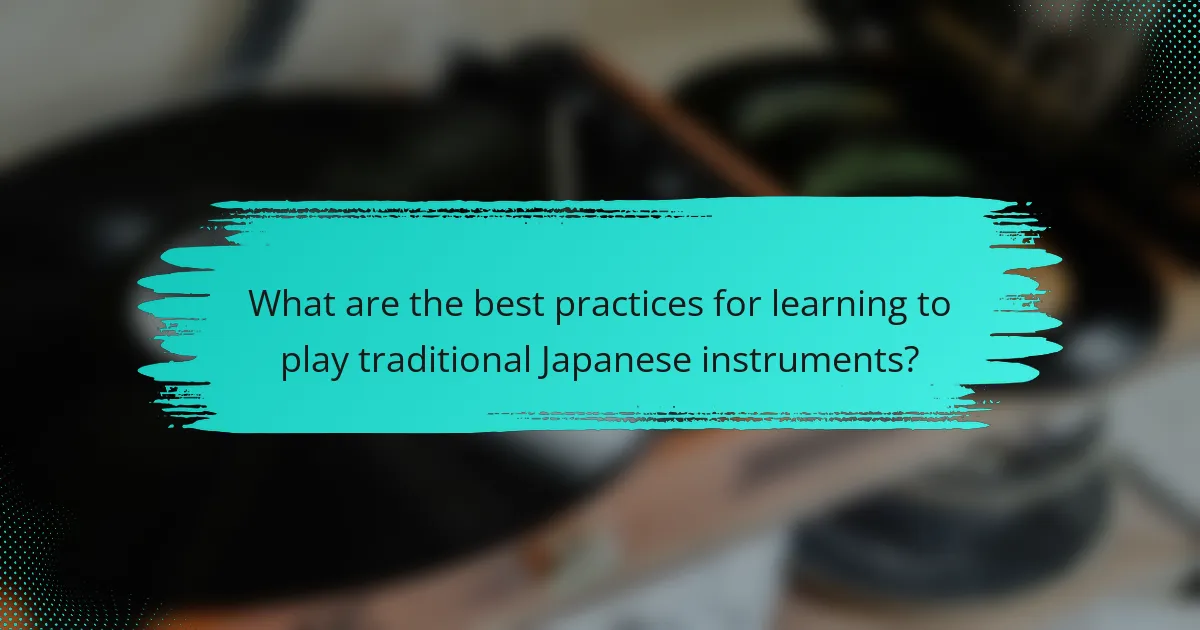
What are the best practices for learning to play traditional Japanese instruments?
To effectively learn traditional Japanese instruments, focus on structured practice, cultural immersion, and guidance from experienced musicians. Start with foundational techniques and gradually explore advanced skills.
Engage with local communities or online platforms to find teachers and resources. Regularly attend performances to understand the musical context and nuances. Utilize instructional materials, such as books and videos, to supplement learning.
Practice consistently, setting specific goals to track progress. Incorporate improvisation to enhance creativity and adaptability. Collaborating with other musicians can provide valuable insights and foster a deeper appreciation of the art form.
What common mistakes should beginners avoid?
Beginners should avoid underestimating the complexity of traditional Japanese instruments, neglecting proper technique, and skipping foundational knowledge. Many struggle with the unique finger placements and breath control required for instruments like the shakuhachi and koto. Additionally, overlooking the importance of cultural context can hinder appreciation and mastery. Lastly, not experimenting with modern collaborations may limit creative expression and understanding of contemporary uses.
How can one effectively integrate traditional techniques into modern compositions?
Integrating traditional Japanese instruments into modern compositions enhances creativity and enriches soundscapes. Musicians can blend instruments like the shamisen or koto with contemporary genres, creating unique fusions. Collaborations between traditional artists and modern musicians can lead to innovative compositions that appeal to diverse audiences. Utilizing digital technology allows for the manipulation of traditional sounds, making them accessible in various musical contexts.
